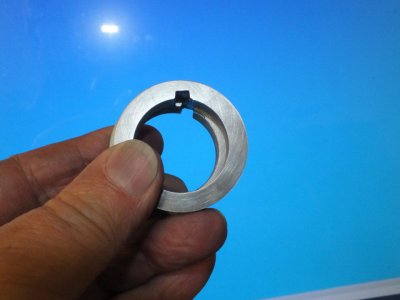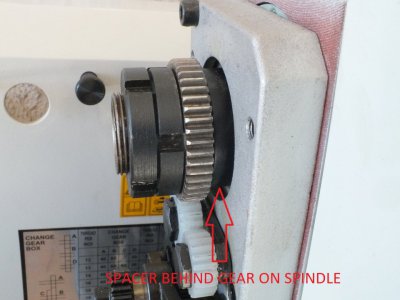Most likely, you will have to thin down the spacer between the back of the spindle, and the cobbed pully the belt runs over. Tapered bearings are thicker than the stock ball bearings, and push that whole assembly back. You will also have to thin down the spindle so that the rear bearing set is free to slightly slide on the back part of the spindle, otherwise you pre-load will end up being wrong. (the rear bearing which is furthest from the chuck needs to be able to move without excessive force on the spindle, otherwise, when you try to adjust pre-load for the bearings, the bearing may have a lot of "stiction" and either be too loose, or wedged to tightly). For that, you may need to make a conical jig to spin the spindle in a drill press (or another lathe), to make sure your light sanding stays near-concentric.



